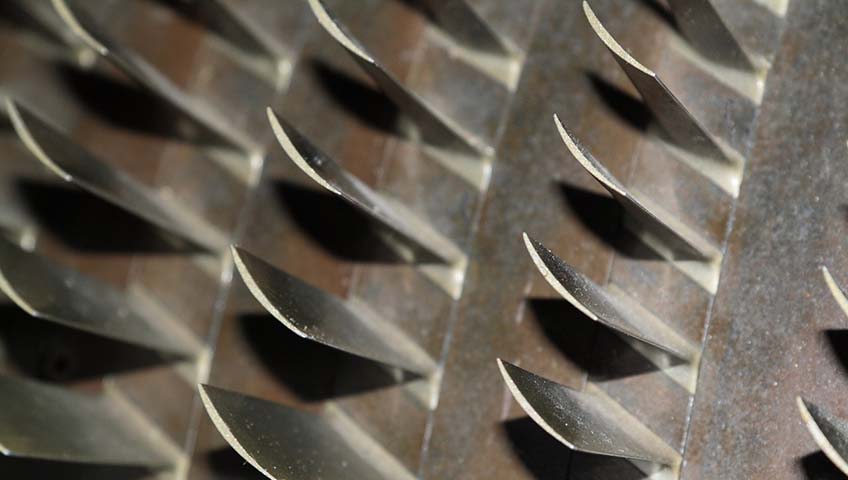- By Matt Seeboth
- Cathodic Protection Articles
- 0 Comment
Mining Titanium Ores: Ilmenite and Rutile
The production of titanium begins with the extraction of suitable titanium-bearing ores. The two primary ores from which titanium is derived are ilmenite and rutile.
Ilmenite Mining:
Ilmenite is a mineral composed of iron and titanium dioxide (FeTiO3). The mining of ilmenite typically takes place in beach or coastal areas, as this mineral is often found in heavy mineral sand deposits. Mining operations involve the removal of sand layers to access the ilmenite-rich sands beneath. Dredging and earthmoving equipment are commonly used in this process.
Rutile Mining:
Rutile, on the other hand, is a more concentrated source of titanium dioxide (TiO2). It is often mined as hard rock deposits in igneous and metamorphic rocks. Extracting rutile involves drilling, blasting, and excavation of the ore-bearing rock. Once extracted, the rutile ore is transported to processing facilities.
Ore Beneficiation and Preparation
After mining, the raw ore undergoes beneficiation to separate the titanium-bearing minerals from other components. This is a crucial step in the titanium production process.
Ilmenite Beneficiation:
For ilmenite, beneficiation involves removing impurities such as iron oxides and other heavy minerals. Magnetic separation and gravity separation methods are commonly employed. This process results in concentrated ilmenite that is more suitable for further processing.
Rutile Processing:
Rutile, being a more concentrated form of titanium dioxide, requires less beneficiation. However, it is still subjected to processes like magnetic separation and gravity separation to remove impurities and achieve a higher-grade rutile concentrate.
Chlorination and Reduction: Converting to Titanium Tetrachloride
Once the ore has been beneficiated and prepared, the next step is to convert it into a form suitable for reduction to obtain pure titanium metal. This is achieved through a two-step process involving chlorination and reduction.
Chlorination:
The prepared ore, whether it is ilmenite or rutile concentrate, is chlorinated to produce a volatile titanium compound known as titanium tetrachloride (TiCl4). Chlorination is carried out by heating the ore concentrate with chlorine gas (Cl2) at high temperatures, often exceeding 900°C (1,652°F). The chemical reaction can be summarized as follows:
TiO2 + 2Cl2 → TiCl4 + O2
Reduction: Producing Titanium Sponge
The heart of the titanium production process lies in the reduction of titanium tetrachloride to produce titanium metal. This reduction process is often referred to as the Kroll process, named after its inventor, William J. Kroll.
Reduction Reactor:
Inside a specialized reactor, titanium tetrachloride is subjected to reduction by a strong reducing agent, typically magnesium (Mg) or sodium (Na). The reactor is maintained at high temperatures, often exceeding 1,000°C (1,832°F), and is operated under a controlled atmosphere of inert gas, such as argon. This controlled environment prevents unwanted reactions and ensures the reduction of titanium tetrachloride to titanium metal.
Reduction Reaction:
The chemical reaction between titanium tetrachloride and the reducing agent is highly exothermic, generating a substantial amount of heat. The reduction can be represented as follows:
TiCl4 + 2Mg (or 2Na) → Ti + 2MgCl2 (or 2NaCl)
This reaction results in the formation of pure titanium metal and chloride salts of the reducing agent.
Titanium Sponge:
The end product of the reduction process is titanium sponge, which is a porous, high-purity form of titanium metal. The term “sponge” reflects the sponge-like appearance of the resulting material. The titanium sponge can be further processed into various forms, such as ingots or billets, depending on the specific industrial requirements.
Purification and Melting
While the reduction process yields high-purity titanium sponge, further purification may be necessary for applications requiring the highest levels of purity, such as aerospace and medical applications.
Vacuum Arc Remelting (VAR):
In the VAR process, titanium sponge or other titanium materials are melted under vacuum conditions using an electric arc. This process helps remove trace impurities and gases, resulting in even higher-purity titanium.
Melting and Forming Alloys:
For some applications, especially in the aerospace industry, titanium may be alloyed with other elements to enhance specific properties. Common alloying elements include aluminum, vanadium, and others. The alloys are created by melting titanium sponge and the desired alloying elements in precise proportions. The molten metal is then cast into various forms, such as ingots or billets.
Final Applications: Diverse Industrial Uses
The high-purity titanium obtained through these processes finds its way into an array of industrial applications:
Aerospace Industry:
Titanium’s exceptional strength-to-weight ratio, corrosion resistance, and high-temperature performance make it invaluable for aerospace components. It is used in aircraft frames, landing gear, engine components, and more.
Medical Field:
Titanium’s biocompatibility and resistance to corrosion make it a preferred material for medical implants, such as hip replacements, dental implants, and surgical instruments.
Chemical Processing:
Titanium’s resistance to corrosion by chemicals and acids makes it suitable for equipment used in the chemical processing industry.
Marine Applications:
Due to its resistance to saltwater corrosion, titanium is used in marine applications, including shipbuilding and offshore structures.
Automotive Industry:
Titanium alloys are employed in high-performance automotive parts to reduce weight and improve fuel efficiency.
The production of titanium, from mining ores to obtaining pure metal, is a complex and precise process that combines metallurgical expertise with cutting-edge technology. From the aerospace industry’s advanced components to life-enhancing medical implants, titanium continues to push the boundaries of what is possible in the world of materials engineering.

